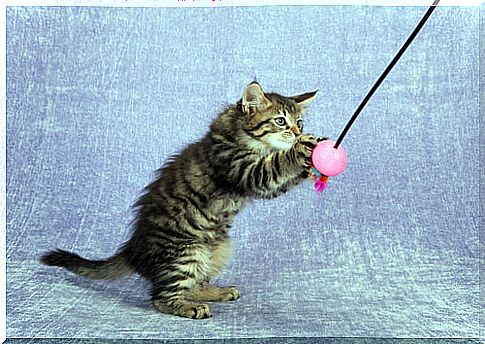Tips On How To Train A Cat

The cat is a curious, intelligent and unpredictable animal: its elegance and its magnetism irremediably attract us. When you have one at home, the first few days will be an adventure for both of you, so here are some tips to help you train your feline so you can create a strong and healthy bond.
A happy cat, a listening cat
The key to a good coexistence between an animal and the owner is to understand each other. In the case of the cat, you must take into account that his way of communicating varies according to his mood and circumstances.
A dog has no problem making us understand what he wants and how he wants it. A cat, on the other hand, can feel stressed and nervous without the owner realizing it. Below you will read a list of behaviors you need to pay attention to:

- The fact that he hides and doesn’t want to be touched. Every self-respecting cat has a place of its own in which to take refuge to escape human caresses, but there are signs that may indicate that the animal is not feeling well and that it needs to be alone. Consult a veterinarian if this seems to you.
- Scratch all the objects in the house. The presence of new furniture can alter his perception of the territory, which he marks with pheromones . If you have recently renovated your home or there are a large number of cats in the area, your feline may be suffering from anxiety or stress.
You must also pay attention to the demonstrations of happiness or relaxation: the raised and waving tail, the fact that it rubs on your legs and the desire it has to play, indicate that your cat is healthy and happy.
Training a cat: tactics and tips
You cannot bend an animal’s will to do something that goes against its instincts or its nature. What you can do as a responsible owner is to channel energy and enhance your pet’s abilities. With adequate stimuli you will be able to get the right reaction.
The goal is for the cat to associate a certain behavior with the command or action of its owner. What techniques do you need to use to be able to do this?
- First, start with positive reinforcement. A prize or a gift will be the ideal stimuli for a cat. Once the desired behavior comes to him instinctively, you no longer need a reward. You have to make it disappear gradually, and replace it with praise and caresses. Keep in mind that the animal will naturally tend to repeat the action that has positive consequences.
- Be consistent. This is essential. An animal will never behave the way you want if you constantly change commands. You have to use the same phrase or the same stimulus. Once it has associated the desired behavior with the order, all you have to do is repeat them.
- Start training him as soon as possible. The ideal is to start educating your cat as a puppy, as it will learn faster and easier. It is essential that he gets used to the presence of humans in the environment that surrounds him.
- Negative reinforcements. Cats can be a problem for your furniture, plants or food. You don’t have to hurt them physically, but try to educate them. Generally, they will listen to you if you use a harsh tone (such as words like “NO!” Or “OUT!”). In case it doesn’t work, you can spray them with water to dissuade them.

Clicker training: what is it?
The clicker training method is not based on negative reinforcement. It involves using a small plastic device that makes a “click” when it opens. This sound is strange for a cat. Thanks to its specificity, it will be able to clearly associate it with a command.
We remind you that the clicker training method requires patience. First, you need to let your cat familiarize yourself with the sound and then give him a treat to let him know he needs to take an interest in the object.
Here are some tips for this device to be effective:
- The “click” should be heard as you show the cat the command you want it to learn, not later.
- It is worth just one “click” for each order. More could confuse him.
- Start with easy actions that the cat already does on its own, such as sitting down or answering when the owner calls.









